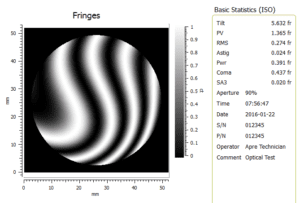
The many laser Fizeau interferometer choices make selection confusing.
You don’t want an laser Fizeau interferometer. You just want optics that meet specification, and your Fizeau interferometer helps you do just that. Yet choosing the right interferometer can be confusing. Just consider the choices:
Data Acquisition
- PSI, IPMI, or Carrier Fringe, or wavelength tuning, vibration insensitive, vibration tolerant, multi-surface, scanning Fizeau, stitching…
Illumination
- high-coherence, low-coherence or partial coherence (ring)
Wavelength
- 633nm, 1.06um, 3.39um, 1550nm, 10.6um, 650nm, and many others.
Imaging
- zoom, discrete, and fixed magnification, plus ground glass or coherent
Detectors
- 256K, Mega or multi-mega pixel detectors, and then their is CCD or CMOS
System Configurations
- Common path, off-axis, high-slope, steep surface, mid-spatial frequencies
Software Analysis
- Zernike, slope, ISO, masking, frequency filters, box filters, and a plethora of others
Applications
- wavefront, surface, radius of curvature, homogeneity, wedge, corner cubes and …
The combinations are hard to keep track of let alone configure to your specific requirements and budget. So over the next few weeks we will be running a series of blogs to offer some guidance and insight regarding what is important depending on your application.
In the next post we’ll set the stage with a brief history of optical test interferometry.